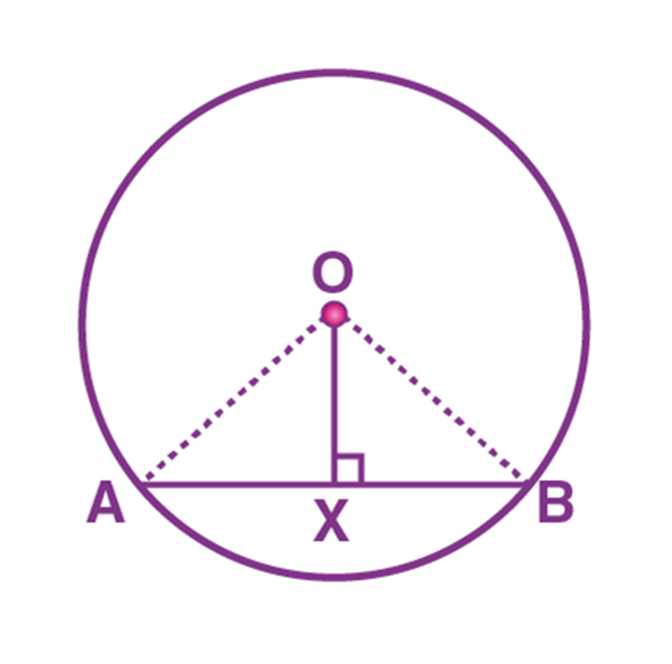Perpendicular from the Centre to a Chord
In Mathematics, a chord is a line segment that joins two points on the circumference of a circle. We know that the longest chord of a circle is a diameter that passes through the centre of a circle. In this article, we will discuss the theorem related to the perpendicular from the centre to a circle and its proof, and the converse of this theorem in detail.
Perpendicular from the Centre to a Chord – Theorem and Proof
Theorem:
The perpendicular from the centre of a circle to a chord bisects the chord.
Proof:
Consider a circle with centre “O”.

AB is a chord such that the line OX is perpendicular to the chord AB.
(i.e) OX ⊥ AB
Now, we need to prove: AX = BX
To prove AX = BX, consider two triangles OAX and OBX.
∠OXA = ∠OXB (∠X = 90°)
OX = OX (Common side)
OA = OB (Radii)
By using the RHS rule, we can prove that the triangle OAX is congruent to OBX.
Therefore,
∆OAX ≅ ∆OBX
Hence, we can say that AX = BX ( Using CPCT)
Thus, the perpendicular from the centre of a circle to a chord bisects the chord, is proved.
The Converse of this Theorem:
The line drawn through the centre of a circle to bisect a chord is perpendicular to the chord
Proof:
Consider the same figure, as given above.
Assume that AB is the chord of a circle with centre “O”.
The centre “O” is joined to the midpoint “X” of the chord AB.
Now, we need to prove OX ⊥ AB.
Join OA and OB, and the two triangles formed are OAX and OAB.
Here,
OA = OB (Radii)
OX = OX (Common side)
AX = BX (As, X is the midpoint of AB)
Therefore, we can say that ∆OAX ≅ ∆OBX.
Thus, by using the RHS rule, we get
∠OMA = ∠OMB = 90°
This proves that the line drawn through the centre of a circle to bisect a chord is perpendicular to the chord.
Hence, the converse of this theorem is proved.

 ABCD CLASSES
ABCD CLASSES
